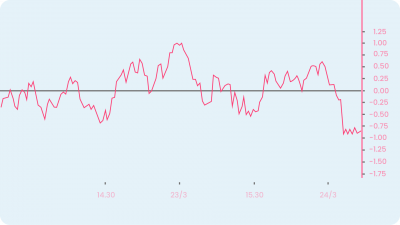Range and True Range are the building blocks of understanding price volatility in financial markets. Range gives a basic overview of price movement, while True Range offers a more comprehensive view by considering the impact of price gaps.
Range
Before we dive into True Range, let’s start with the concept of Range. Range is the difference between the High and the Low prices of a candle. It is a basic measure of price volatility and provides a fundamental understanding of how much an asset’s price fluctuates within a given timeframe.

The Range formula is straightforward:
Range = High – Low
For example, if the High price of a stock for the day is 110 and the low is 102, the Range would be 8. This helps in understanding the magnitude of price movements for that candle.
True Range (TR)
While Range is useful, it has a limitation: it only considers the difference between the current candle High and Low. True Range (TR) improves upon this by including Gap-ups and Gap-downs in price. True Range provides a more comprehensive view of price movement by considering the current candle’s High and Low as well as the previous candle’s Close.
Developed by J. Welles Wilder, the True Range is calculated by measuring the maximum value between the previous candle’s Close and the current candle’s High or Low.
The True Range formula is
True Range = Max((High – Low), Abs(High – Previous Close), Abs(Low – Previous Close))

Conclusion
Range is the difference between the High and Low of a candle. True Range values provide a more precise method of calculating price movement for a specific period. In the next article, we will understand the concept of the Average True Range (ATR) and how it can be used for risk management and position sizing.








